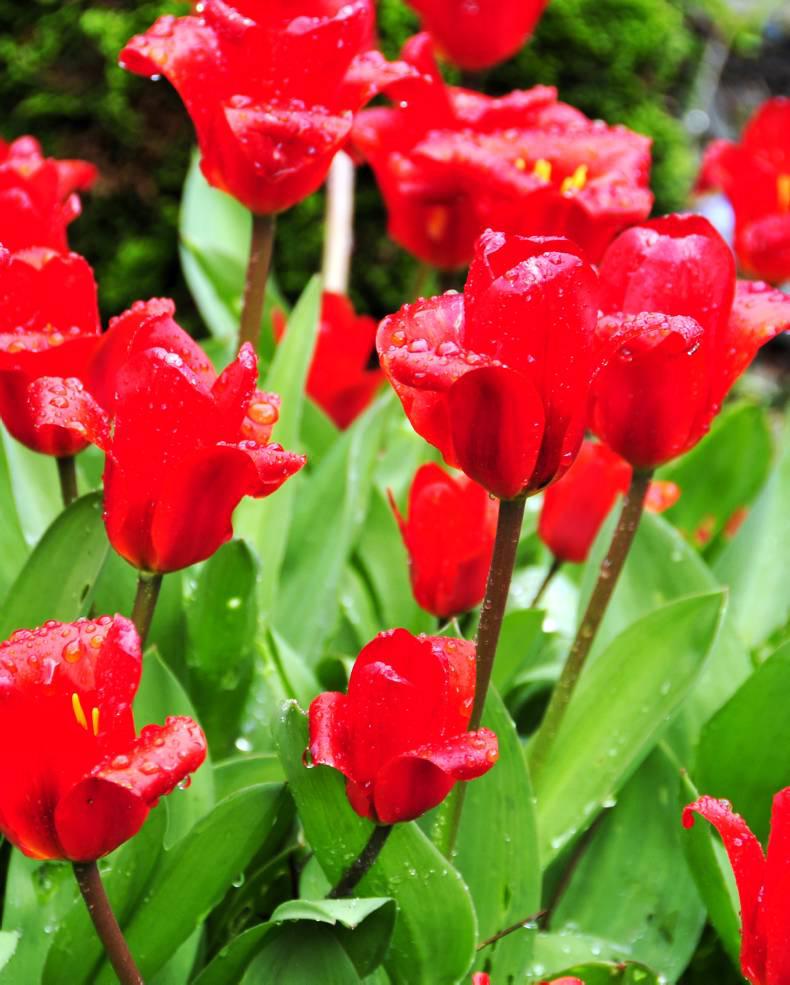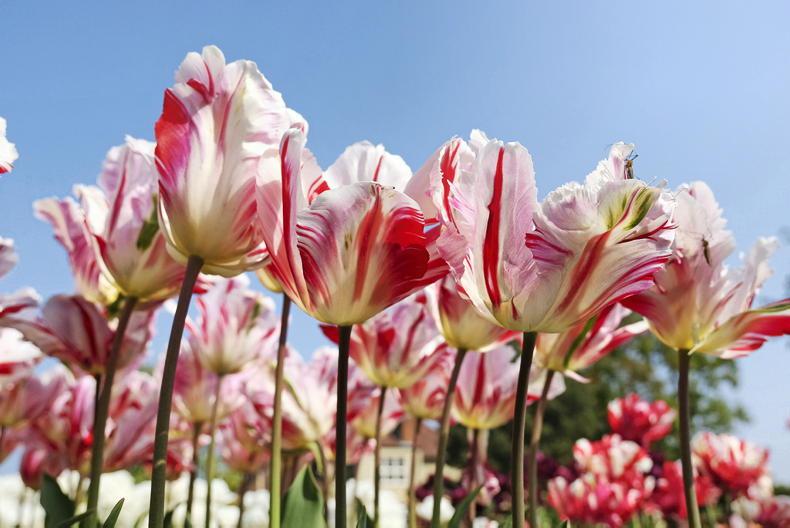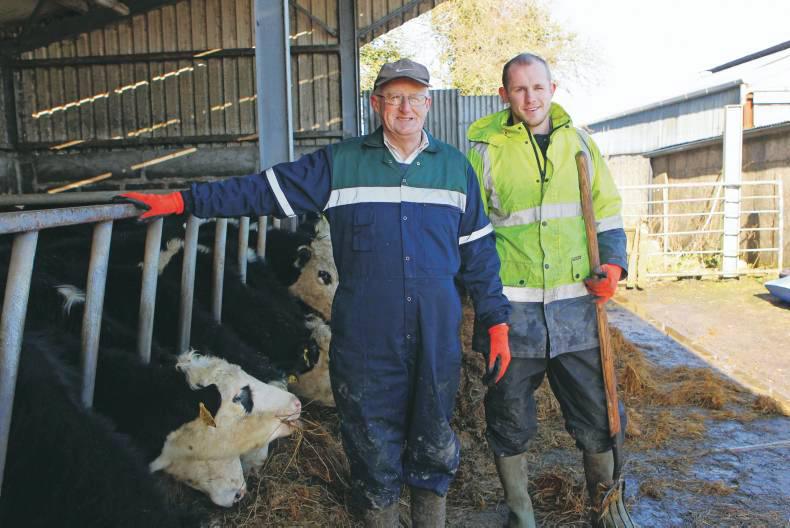These tulips are naturally bright red or yellow and both of these colours are very eye-catching in early spring when flower beds and borders can look empty and bleak.
There are the other early spring bulbs, of course, such as snowdrops and crocuses, and they work their wonders in bringing a touch of life to the garden, but the tulips are not matched for the intensity of their colour. In fact, so bright are these colours that some people like to use them only in pots or containers, judging that they are too vivid for the open garden that’s still in its low-key winter garb.
There are three main species of these early-flowering tulips: Tulipa fosteriana, Tulipa greigii and Tulipa kaufmanniana. They are all quite short in stature. The tallest is Tulipa fosteriana, reaching about 40cm, but the other two reach only about half that height. They are all from Kazakhstan, Tajikistan and Uzbekistan, countries on the north-western side of the great Himalayan range of mountains.
Typically, they come from dry, rocky slopes and rough grazing land. In effect, they are alpine species and, like many alpines, respond early in spring to the first warming days. Often, they have the tops of the leaves above ground in late winter and come into flower quickly when the soil temperature rises. Being early flowering, these little tulips have always attracted attention.
The flowers are more open than the later tulips and they open flat out when the sun shines. Kaufmann’s tulip is also called the water lily tulip because it has petals that open out in a way reminiscent of the water lily. The leaves of the Greigii and Kaufmann types are usually heavily blotched or streaked with brown-purple and this adds a touch of decoration before the flowers open. The leaves also complement the red and yellow flowers.
The backs of the flower petals can be streaked with a flash of red on yellow, or yellow on red. The petals narrow at the tips, sometimes almost pointed, and some kinds arch the petals backwards.
These small tulips are best used near the front of a border where they can be seen best, but other groups could be placed further back in a border to lend depth and take the colour back among leafless shrubs and emerging perennial flowers. Some of the emerging perennials, such as peonies, monarda and phlox, have brown tints and these are greatly enlivened by the brilliant red and bright yellow of the tulips. A range of hybrids of these species have been raised to have more variation in colour, crossing them with large-flowered kinds. Many are streaked, often with a dark-coloured base to the petals.
Heart’s Delight is a popular Kaufmann variety with pointed petals that form a narrow flower. The insides and edges of the petals are pink with a strong red flash up the back of the petals. Red Riding Hood is the best-known of all these early tulips, with scarlet inner petals and dark, rich red on the outside, the petals pointed and opening out fully in sunshine. Being relatively small plants, any of these early kinds are great for pots or window boxes. They can be followed by later-flowering tulips when the petals fall. The early tulips will last for years but only in sharply drained soil in full sunshine. Otherwise, the bulbs rot and snails can cause a lot of damage. CL
Ornamental grass
Ornamental grasses have become very popular and are used in many gardens for their fine foliage. Even when withered in winter, the foliage is attractive, but it is tricky to know what to do with it when spring arrives and there is still a tuft of dead foliage. Some people cut the top growth off and leave a little mound of cut stems, which can be very unsightly until new leaves grow out and hide it. A cut-off top also appears unnatural on these most natural-looking plants. As an alternative to chopping, it is possible to tug out the oldest leaves because these rot at the base. Even if the more recent leaves and stems will not tug out, the plant still looks neater than it was and the unnatural chopped-top is avoided.
Flowers
Bedding flowers can be sown over the next 10 days or so. Start the seeds in warm conditions in a propagator or in a warm kitchen. Lifting and dividing herbaceous flowers should be completed soon as plants begin to grow more steadily. Control weeds.
Fruit, vegetables and herbs
If the ground has dried out enough, early vegetables can be sown, such as broad beans, early peas, lettuce, carrots and early cabbage. Plant garlic and shallot sets now. New fruit trees and bushes should also be planted. Finish pruning of apple and pear trees and blackcurrant bushes.
Trees, shrubs and roses
Bush roses and repeat-flowering climbers should be pruned immediately because the new leaves are already sprouting. They should also be sprayed for blackspot disease. Finish any remaining bare-root planting of trees and shrubs and make sure to water during a dry spell.
Lawn
Mowing should be done if the ground is firm. Apply lawn mosskiller if there is heavy moss growth. Lawns can be re-seeded without cultivating by spraying the grass with glyphosate and re-sowing over the dead sod.
Greenhouse and house plants
Sow seeds of tomatoes, sweet peppers, Cape gooseberries and chilli peppers. A sowing before mid-March will produce ripe tomatoes in late July. Feed and heavily water all greenhouse plants, and house plants, if not already done.










SHARING OPTIONS